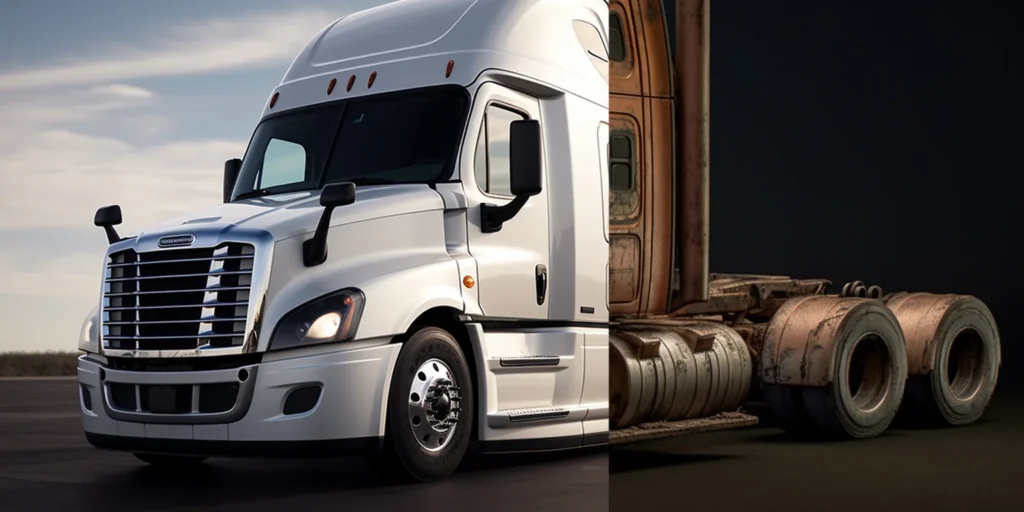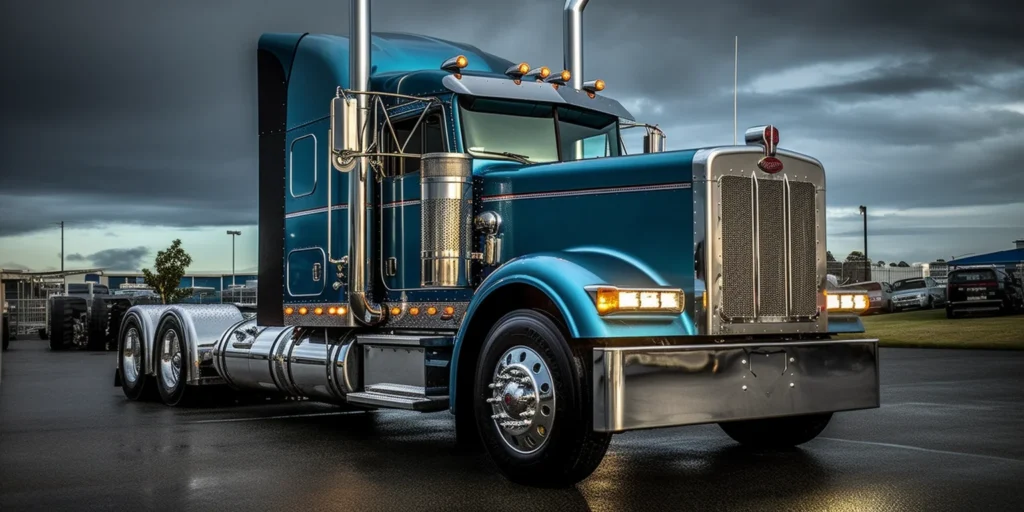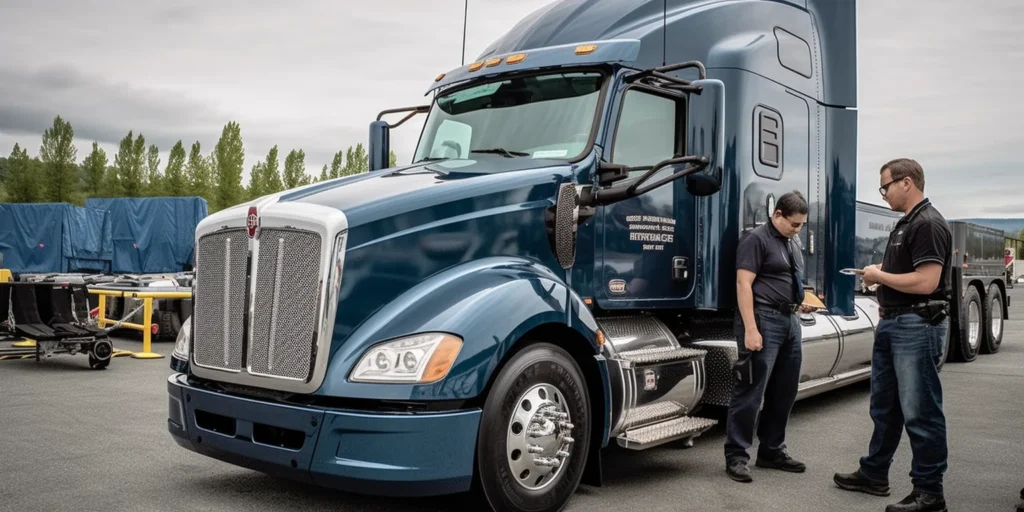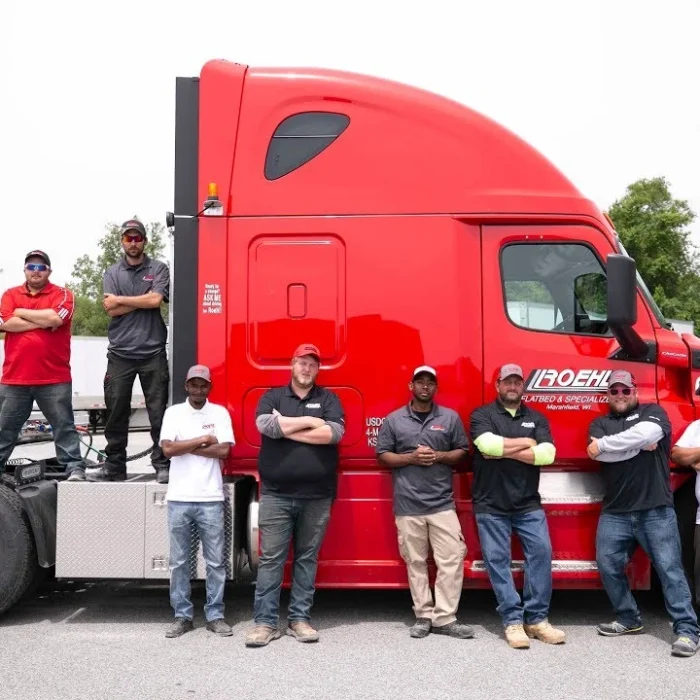Why Buy a Semi Truck for Your Trucking Business
Advantages of Owning a Semi Truck
Owning a semi truck can bring numerous benefits to your trucking business or career as an owner-operator. These advantages include increased revenue potential, freedom to choose your own routes and clients, and the ability to build equity in your truck as you pay it off.
Disadvantages of Owning a Semi Truck
On the other hand, owning a semi truck also comes with its own set of challenges. These can include the responsibility of maintenance and repairs, the need for insurance coverage, and the risks associated with fluctuating market conditions in the trucking industry.

New vs. Used Semi Trucks for Your First Semi Truck Purchase
Pros of Buying a New Semi Truck
When making your first semi truck purchase, buying a brand new semi truck has several advantages. You can expect a warranty, the latest technology, and potentially better fuel efficiency. These new trucks can also provide a sense of pride and accomplishment for owner-operators entering the industry.
Cons of Buying a New Semi Truck
However, a new semi truck can be expensive and may depreciate quickly. This can be especially challenging for owner-operators who are just starting their trucking business and may not have substantial cash flow.
Pros of Buying a Used Semi Truck
Used semi trucks can be more affordable and offer a lower initial investment for your first semi truck purchase. Additionally, used trucks can sometimes retain their value better than new trucks, making them an attractive option for owner-operators on a budget.
Cons of Buying Used Semi Trucks
The downside to buying used semi trucks is that there may be hidden issues or repair costs that aren’t immediately apparent. Older trucks may also lack the latest technology and safety features, which could impact your business operations.

Determining Your Budget for Your First Semi Truck
Before beginning your truck shopping, it’s essential to determine your budget. Consider not only the upfront cost of the semi truck but also ongoing expenses such as maintenance, insurance, and fuel. Be prepared to provide a down payment, as this can significantly impact your financing options and monthly installments.
Semi Truck Financing Options
Bank Loans for Semi Truck Financing
Traditional bank loans can be an option for financing your semi truck purchase. Interest rates may be favorable, but approval may require good credit and a substantial down payment. Be prepared to provide bank statements, tax returns, and a profit and loss statement to secure financing.
Dealer Financing for Semi Truck Purchases
Dealer financing can be more accessible and may offer promotional rates or incentives. Be sure to compare the terms and conditions with other semi truck financing options, such as personal auto loans or alternative lenders, to ensure you’re getting the best loan for your needs.
Leasing Semi Trucks
Leasing a semi truck can provide lower monthly payments and the opportunity to upgrade to a newer model in the future. However, leasing typically doesn’t build equity in the truck, which may be a drawback for owner-operators looking to build long-term value in their business.
Below is an expanded list of the top 10 highest paying trucking companies with approximate yearly salaries and information on work hours. Keep in mind that work hours may vary depending on factors such as route, freight type, and company policies.
Walmart Transportation
- Average yearly salary: $75,000 to $90,000
- Work hours: Walmart drivers typically work full-time, with regional and local routes that allow for regular home time. The company aims to provide predictable schedules and consistent hours.
Sysco
- Average yearly salary: $65,000 to $85,000
- Work hours: Sysco drivers generally work full-time and have local or regional routes, which means they can expect regular home time. Some positions may require early morning starts or occasional weekend work.
Old Dominion Freight Line
- Average yearly salary: $60,000 to $80,000
- Work hours: Old Dominion drivers usually work full-time, with various shifts available, including day and night. Many positions offer regular home time, although some regional or long-haul routes may require longer periods away from home.
UPS
- Average yearly salary: $60,000 to $75,000
- Work hours: UPS drivers typically work full-time, with shifts that can vary based on route and package volume. While many drivers enjoy regular home time, peak seasons may require additional hours or weekend work.
FedEx
- Average yearly salary: $55,000 to $75,000
- Work hours: FedEx drivers generally work full-time, with varying shifts and routes. Many positions offer regular home time, but long-haul or regional routes may require extended periods away from home.
YRC Worldwide
- Average yearly salary: $55,000 to $70,000
- Work hours: YRC Worldwide drivers often work full-time, with different shifts and routes available. Local and regional positions typically offer regular home time, while long-haul drivers may spend more extended periods on the road.
J.B. Hunt Transport Services
- Average yearly salary: $50,000 to $80,000
- Work hours: J.B. Hunt offers a variety of driving positions, with work hours that can vary based on route and job type. Many positions provide regular home time, but some regional or long-haul roles may require longer periods away from home.
XPO Logistics
- Average yearly salary: $55,000 to $75,000
- Work hours: XPO Logistics drivers typically work full-time, with a range of shifts and routes available. Local and regional positions often allow for regular home time, while long-haul drivers may spend more time on the road.
Schneider National
- Average yearly salary: $50,000 to $75,000
- Work hours: Schneider National drivers usually work full-time, with various shifts and routes to choose from. The company offers positions with regular home time, as well as regional and long-haul opportunities that may involve longer periods away from home.
Con-way Freight
- Average yearly salary: $50,000 to $70,000 (before acquisition by XPO Logistics)
- Work hours: Before the acquisition by XPO Logistics, Con-way Freight drivers generally worked full-time, with a variety of shifts and routes available. Many positions offered regular home time, although some regional or long-haul roles required extended periods on the road.

Choosing the Right Semi Truck for Your Business
Engine and Transmission Options
Selecting a truck with a reliable engine and transmission is crucial for long-term performance and minimizing downtime. Consider both manual transmission and automated manual transmission options to find the best fit for your driving preferences and business needs.
Fuel Efficiency and Maintenance Costs
Fuel efficiency is a critical factor in controlling operating costs. Research the fuel economy of different makes and models of semi trucks to find the best fit for your needs. Additionally, consider the availability of parts and service centers for the make and model of the truck you’re considering. Some brands may have higher maintenance and repair costs due to limited availability of parts or specialized service.
Comfort and Safety Features
Don’t overlook the importance of comfort and safety features in semi trucks, as they can significantly impact driver satisfaction and overall performance. Look for features such as ergonomic seats, adaptive cruise control, and collision avoidance systems.
Day Cab vs. Sleeper Cab
Consider whether a day cab or sleeper cab is the right choice for your trucking business. Day cabs are typically lighter and more fuel-efficient but lack the sleeping accommodations found in sleeper cabs. Choose the configuration that best suits the routes and distances you plan to cover with your semi truck.

Inspecting a Used Semi Truck for Your First Truck Purchase
Visual Inspection
Before purchasing a used semi truck, conduct a thorough visual inspection. Check for signs of rust, damage, and excessive wear and tear. This can help you avoid purchasing a vehicle with hidden problems that could cost more money down the road.
Test Drive
A test drive is essential for evaluating the performance and handling of the semi truck. Pay attention to any unusual noises, vibrations, or other issues during the drive. This can help you make a more informed decision when it comes to buying a semi truck.
Professional Inspection
It’s always a good idea to have a professional mechanic inspect the truck before finalizing the purchase. They can identify potential problems that may not be apparent during a visual inspection or test drive, ensuring you get the best value for your money.

Negotiating and Closing the Deal on Your Semi Truck Purchase
Research Market Prices
Before entering negotiations, research the market value of the truck you’re interested in. This information can help you determine a fair price and strengthen your negotiating position when buying a semi truck.
Prepare for Negotiation
Be prepared to negotiate and have a clear understanding of your budget and semi truck financing options. Don’t be afraid to walk away if the deal isn’t right for you. Remember that the right truck at the wrong price is not the perfect truck for your trucking business.
Finalizing the Semi Truck Purchase
Once you’ve agreed on a price, finalize your semi truck financing and complete any necessary paperwork. Ensure you have a clear understanding of any factory warranties, primary liability coverage, and additional terms or conditions that may come with your truck purchase.

Additional Tips for Buying a Semi Truck
Importance of a Good Credit Score for Semi Truck Financing
Maintaining a good credit score is crucial when seeking semi truck financing. Lenders will be more likely to approve your loan application and offer better interest rates if you have a solid credit history. Bad credit may not completely disqualify you from financing options, but it could lead to higher interest rates and less favorable terms.
Shopping for the Right Insurance Coverage
When buying a semi truck, it’s essential to have the right insurance coverage in place. Primary liability coverage is required by law, but owner-operators should also consider additional coverage types like cargo insurance, physical damage coverage, and non-trucking liability insurance. Shop around to find the best coverage for your needs and budget.
Seek Advice from Experienced Owner-Operators
The best advice for purchasing a semi truck often comes from those who have already been through the process. Talk to experienced owner-operators or seek advice from online forums and communities dedicated to the trucking industry. Their insights can help you avoid common pitfalls and find the ideal truck for your trucking business.
Consider the Long-Term Costs of Owning a Semi Truck
When assessing the cost of owning a semi truck, remember to factor in long-term costs like maintenance, repairs, and replacement parts. Older trucks may have lower upfront costs, but they can also have higher long-term expenses due to more frequent repairs and less efficient engines. It’s essential to weigh these factors when making your truck purchase decision.
Building Equity and Planning for the Future
When buying a semi truck, consider how your purchase will impact your future financial goals. Building equity in your truck through loan payments and proper maintenance can help you secure better financing options for future truck purchases or expansions of your trucking business. Plan ahead and make purchasing decisions with your long-term goals in mind.

To Conclude
Buying your first semi truck is a significant investment that requires careful consideration and planning. By following the steps outlined in this article, you can make an informed decision and find the right semi truck to meet the needs of your trucking business.







